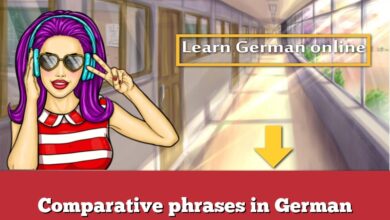Definite and indefinite articles

Learning definite and indefinite articles in German involves understanding the gender of nouns and the corresponding article that accompanies them. Here are some steps to help you learn definite and indefinite articles in German:
- Understand the concept of gender: In German, nouns are assigned one of three genders: masculine (der), feminine (die), or neuter (das). It is important to learn the gender of nouns along with their corresponding articles, as they play a significant role in sentence structure.
- Learn the definite articles: Definite articles are used when referring to specific nouns. Memorize the definite articles for each gender:
- Masculine: der (e.g., der Mann – the man)
- Feminine: die (e.g., die Frau – the woman)
- Neuter: das (e.g., das Buch – the book)
- Plural: die (e.g., die Kinder – the children)
- Learn the indefinite articles: Indefinite articles are used when referring to nonspecific or unidentified nouns. Familiarize yourself with the indefinite articles for each gender:
- Masculine: ein (e.g., ein Mann – a man)
- Feminine: eine (e.g., eine Frau – a woman)
- Neuter: ein (e.g., ein Buch – a book)
- Plural: keine (e.g., keine Kinder – no children)
- Practice with noun genders and articles: Study and practice the gender of nouns along with their corresponding definite and indefinite articles. Create flashcards or use online resources that provide exercises to help reinforce your understanding.
- Pay attention to noun endings: In German, the endings of nouns can sometimes indicate their gender. For example, many nouns ending in -ung (die Zeitung – the newspaper) are feminine, while those ending in -chen or -lein (das Mädchen – the girl) are neuter. However, this rule is not absolute, so it’s important to learn the gender of each noun individually.
- Read and listen to German texts: Exposure to German texts, articles, books, and conversations will help you encounter different nouns and their corresponding articles in context. This exposure will deepen your understanding of how articles are used with specific nouns.
- Use grammar resources and exercises: Utilize grammar books, websites, or language learning apps that provide explanations and exercises on definite and indefinite articles. Regular practice will help you internalize the rules and become more comfortable using articles correctly.
Remember that learning definite and indefinite articles in German requires practice and exposure to the language. Keep practicing, and over time, you will develop a better sense of which articles to use with different nouns.





























